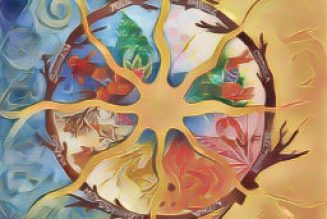ORIGIN
Greek. Messenger of the gods.
KNOWN PERIOD OF WORSHIP
circa 800 BC but probably earlier until Christianization (circa AD 400).
CENTER(S) OF CULT
Pheneos (Arcadia); otherwise few specific places, but strongly associated with wayside shrines and cairns.
ART REFERENCES
probably certain prehistoric phallic figures marking boundaries; Parthenon frieze; Hermes of Praxiteles in Olympia.
LITERARY SOURCES
Iliad, Odyssey (Homer); Theogony (Hesiod).
Hermes is the son of a nymph, MAIA, who consorted with ZEUS. He was born in the Arcadian mountains, a complex, Machiavellian character full of trickery and sexual vigor.
His most significant consort is APHRODITE.
He is a God of boundaries, guardian of graves, and patron deity of shepherds.
Perversely, he patronizes both heralds and thieves and is a bringer of good fortune.
According to legend Hermes as a day-old infant stole the cattle of his elder brother APOLLO while playing the lyre.
Legend accords to him the invention of fire also generated on his first day.
Hermes’s skills at theft were put to use by the other gods of Olympus, who sent him to liberate ARES from a barrel and to bring King Priam of Troy into a conciliatory meeting with the Greek war hero Achilles after the death of Hector.
Classical art depicts Hermes wearing winged golden sandals and holding a magical herald’s staff consisting of intertwined serpents, the kerykeion.
He is reputedly the only being able to find his way to the underworld ferry of Charon and back again.
Hence he was sent to bring both PERSEPHONE and Eurydice back from Hades.
In company with other Greek gods, Hermes is endowed with not-inconsiderable sexual prowess which he directs toward countryside nymphs and with which he also maintains a healthy and thriving population of sheep and goats!
He was often represented in wayside shrines in the form of a phallic pillar or post which was regarded as a funerary monument, hence the role of grave guardian.







